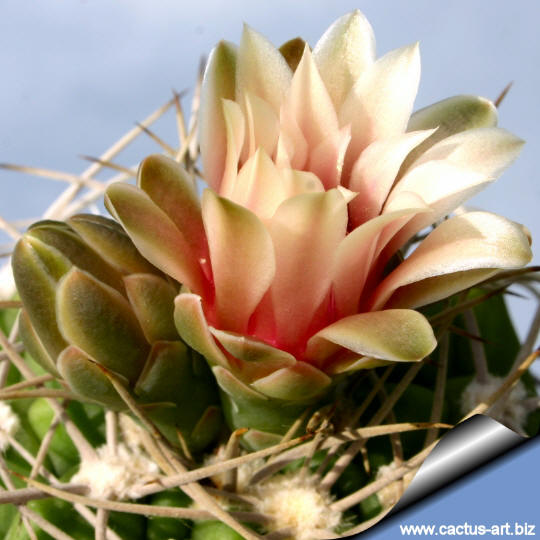|

Large white flowers with a reddish throat
from mid spring to early summer.

Cultivation: It
is a summer grower species that offers no cultivation difficulties.
Water regularly in summer (
but can handle excessive water to few
water) Keep this plant almost dry in winter at a minimum
temperature of 0°C, prefer relatively rich substrate and
low pH
compost (if possible not limestone) otherwise
growth will stop altogether. Feed with a high
potassium fertilizer in summer. It is quite frost resistant if kept dry
(Hardy to -12C)
Sun Exposure: Light shade. It may tolerate
bright situations but is
likely to suffer from sun scorch or
stunted growth if over exposed to direct sunlight during the hottest
part of the day in summer. This plant needs plenty of space for its
roots, repotting should be done every other year or when the it has
outgrown its pot. This species is particularly easy and accommodating,
seldom suffer of
cryptogamic diseases.
Propagation: Direct sow after
last frost. (seldom
produces offsets)
Seed
Collecting: Permit
fruit to
ripen.
Fruit must be significantly
overripe before harvesting seed; clean and dry seeds
Photo of conspecific taxa, varieties,
forms and cultivars of plants
belonging to the
Gymnocalycium mostii
complex
(This
Taxon
has lots of synonyms (
like many other cacti) whit several controversial varieties and
subspecies ):

 |